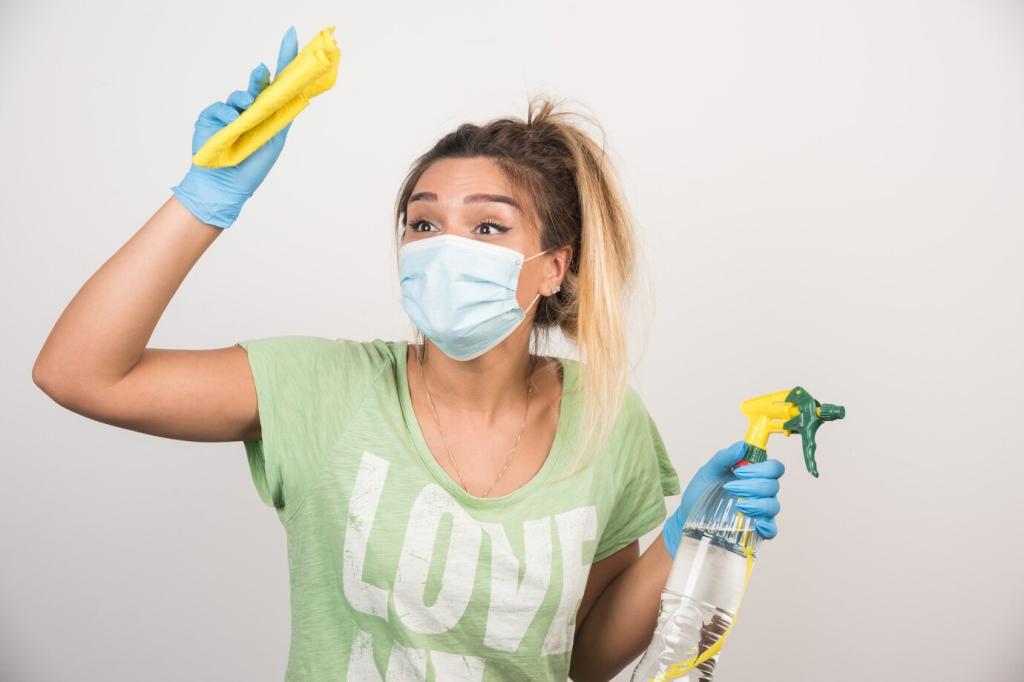Breathe Easy: Chemical-Free Furniture Maintenance Products
Chosen theme: Chemical-Free Furniture Maintenance Products. Welcome to a space where your furniture glows without harsh residues, your air stays fresh, and your routines feel good to practice every day. Stay with us, subscribe for weekly tips, and share your natural-care wins!
Why Chemical-Free Care Matters
Harsh cleaners can introduce strong fumes and lingering residues that irritate sensitive lungs, pets, or children. Chemical-free furniture products minimize volatile compounds, improving indoor air quality and comfort. Have you noticed a difference after switching? Tell us how your home feels now.
Why Chemical-Free Care Matters
Natural oils and waxes nourish wood fibers instead of stripping finishes, helping prevent dryness, cracking, and dullness. Gentle, plant-based formulas also protect leather, cane, and rattan. If you’ve rescued a tired tabletop with a beeswax balm, share the before-and-after in the comments!
Why Chemical-Free Care Matters
Biodegradable ingredients and refillable packaging reduce your environmental footprint while keeping furniture care simple. When runoff is gentler, greywater systems and gardens benefit too. If eco-impact motivates you, subscribe for monthly low-waste challenges tailored to furniture maintenance routines.
Core Ingredients to Trust
Plant Oils and Waxes
Beeswax and carnauba create a protective, low-sheen shield on wood, while jojoba oil conditions without going rancid. These ingredients help repel moisture and enhance grain depth. Always patch test first, then tell us which blend made your dining table glow again.
Gentle Cleaners That Work
A few drops of castile soap in warm distilled water lifts everyday dust and fingerprints from sealed surfaces. Baking soda neutralizes odors on fabrics, while vinegar shines glass and metal—not stone or waxed wood. Share your favorite ratios so newcomers can start confidently.
Essential Oils With Purpose
Lavender, tea tree, and lemon offer light scent and targeted benefits when used sparingly—typically under one percent. Avoid strong citrus on delicate finishes and always test first. Prefer fragrance-free? Skip oils entirely. Comment with your go-to dilution that balances scent, safety, and performance.
Room-by-Room Application
Dust wood weekly using a slightly damp microfiber cloth, then nourish with a beeswax-jojoba mix monthly. For sofas, vacuum seams and use a baking soda refresh before gently blotting stains with castile solution. Share your routine for keeping high-traffic coffee tables scratch-free.

Silky Wood Nourish Balm
Melt two parts beeswax with one part carnauba and six parts jojoba over gentle heat, stirring until clear. Cool slightly, pour into jars, and apply sparingly with a soft cloth. Patch test first, and consider a tiny citrus note under one percent for a bright finish.
Castile Spray for Everyday Dust
Combine 500 milliliters distilled water with one teaspoon liquid castile soap in a spray bottle. Mist a cloth, not the furniture, and wipe sealed wood, metal, or laminate. Avoid stone and waxed finishes. Drop your favorite tweaks below so others can personalize their routine.
Fabric Refresh Mist
Blend 250 milliliters lavender hydrosol with 250 milliliters distilled water in a fine mister. Lightly spray upholstery from a distance and allow to air dry. No heavy fragrances, just clean comfort. Have a couch story this revived? We’d love to feature your before-and-after photos.

Store-Bought Options and Labels
Choose short, recognizable lists: soap bases, plant oils, and natural waxes. Skip harsh solvents, synthetic fragrances, formaldehyde donors, and quats. Transparency matters—brands that disclose full formulas earn trust. Comment with labels you love so our community can shop smarter together.
Care Routines and Schedules
Microfiber dusting, cushion rotation, and spot cleaning prevent buildup that demands harsher interventions later. Keep a small caddy with cloths and your castile spray. What’s your no-fail Sunday routine? Share it so others can adopt the rhythm that keeps surfaces effortlessly fresh.
Once a month, nourish wood with a thin balm layer, then buff. Seasonally, check humidity to prevent warping and cracks. Store textiles clean and dry. Subscribe for printable checklists that make each deep-care session calm, quick, and surprisingly satisfying to complete.
Blot, never rub. Lift wine with salt, follow with club soda on appropriate fabrics, and finish with gentle soap if needed. On wood, absorb immediately and recondition once dry. Share your best rescue stories so we can compile a trusted spill-response guide together.

Stories from a Chemical-Free Home

Grandmother’s Table, Modern Methods
We revived a scratched heirloom using nothing but patience, a soft cloth, and a beeswax-carnauba balm. The grain popped like a photo from another era. Have an heirloom that surprised you after a gentle treatment? Share your tale and inspire another restoration.

The Allergy Test We Didn’t Expect
After switching to fragrance-free, plant-based products, weekend headaches faded and naps on the sofa felt easier. It wasn’t dramatic—just steadily better air. If you’ve noticed similar changes, comment below so others can weigh the benefits of going chemical-free at home.

The Refill Adventure
We tracked packaging waste for a month and cut it by nearly a third using concentrates and refills. The cabinet looks calmer too. Want our refill tracker template and cost breakdown? Subscribe, and we’ll send it along with tomorrow’s routine checklist.
